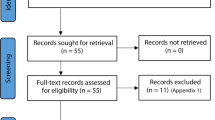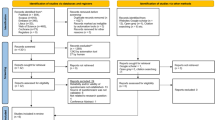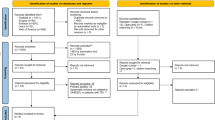Abstract
Data sources
PubMed, ISI, LILACS, Cochrane Library and Embase databases were searched.
Study selection
Epidemiological studies (cross-sectional, case-control, cohort clinical trials) addressing possible associations between socioeconomic indicators (eg mother's schooling, household income, number of children, type of school) and traumatic dental injury in the primary dentition were considered.
Data extraction and synthesis
Two reviewers independently selected studies. with study quality being assessed using the Newcastle-Ottawa Scale (NOS). Data were extracted for categorical variables considered risk factors for TDI and recorded based on the distribution and frequency of TDI among children exposed to risk factors vs the frequency among children not exposed to risk factors. Meta-analysis was undertaken.
Results
Sixteen studies (15 cross-sectional studies and one cohort study) were included. A wide range of socioeconomic indicators were investigated including; parents' schooling, parents' employment status, home ownership, having changed address in the previous year, income, family structure, number of residents in the home, number of children in the family, type of school and socioeconomic status. Children from families with household income less than two times average salary (US$ 592) (OR: 0.77; 95% CI: 0.66–0.90) or more than three times the average salary (US$ 888) (OR: 0.76; 95% CI: 0.65–0.89) had a significantly lower chance of having TDI in the primary dentition. TDI was not associated with socioeconomic status (high vs low – OR: 0.77; 95% CI: 0.43–1.36; high vs medium – OR: 1.03; 95% CI: 0.72–1.48; medium vs low – OR: 0.70; 95% CI: 0.42–1.19), house ownership (owned vs rented – OR: 1.28; 95% CI: 0.98–1.66), mother's schooling (OR: 0.89; 95% CI: 0.74–1.08), or father's schooling (OR: 1.01; 95% CI: 0.62–2.74).
Conclusions
The scientific evidence demonstrates that socioeconomic indicators are not associated with TDI in the primary dentition. The evidence of an association between a low income and TDI is weak. In general, studies had low risk of bias. Further prospective cohort studies are needed to confirm this association.
Similar content being viewed by others
Commentary
Traumatic dental injuries (TDI) are established public dental health problems worldwide with many involved predisposing factors; yet the influence of each factor could vary in different populations. One third of all preschool children have suffered a TDI involving the primary dentition.1 Socioeconomic indicators are among the predisposing factors of different health conditions. Although they may not be associated with traumatic dental injuries in permanent dentition,2 their association with primary dentition has not been clarified.
The aim of this systematic review is to assess the association between traumatic dental injuries (TDI) and socioeconomic indicators namely; household monthly income, mother's schooling, father's schooling, type of school and number of children.
An electronic search for relevant studies was performed in five databases. In addition, a manual search was performed on the reference list of included studies. Only one researcher was involved in the electronic database search. Sixteen studies were included; 15 cross-sectional and one cohort study with follow-up of one year. Data of included studies was collected in the following settings; national vaccination day (seven studies), day care centres, schools and preschools (eight studies) and a municipal health centre (one study).
Study selection and quality assessment of included studies was performed in duplicate. Disagreements were resolved by consensus. Quality assessment was performed using the Newcastle-Ottawa point based scale with 100% agreement between reviewers. Regarding data extraction phase, no information regarding number of researchers performing it was provided. In case of missing data, study authors were contacted when additional information was required.
The abundance of Brazilian studies included in this systematic review (14/16) justified the use of Brazilian minimum monthly wage (BMW) as a measurement of income. The values of 148$, 296$ and 592$ were considered as low, average and high income respectively. Meanwhile, the minimum wages in developed countries like United Kingdom and USA are 2769$ and 1256$ respectively.3 As noted by the authors, it would be difficult to generalise the findings of this systematic review in developed countries because of distinct differences in socioeconomic status compared to developing countries in South America.
Finally, a contradiction can be postulated on the title of this systematic review when it refers to the ‘absence’ of association between socioeconomic indicators and TDI. Because an association can be seen for monthly household income and TDI for an income of more than two times average salary, the odds of TDI is less by 23% [OR=0.77, 95%C.I (0.66-0.90)]. The same protective effect is associated with income more than three times average salary [OR=0.76, 95%C.I (0.65-0.89)]. These results indicate a protective effect of income against TDI in primary dentition.
References
Glendor U . Epidemiology of traumatic dental injuries--a 12 year review of the literature. Dent Traumatol 2008; 24: 603–611.
Bendo CB, Scarpelli AC, Vale MP, Araujo Zarzar PM . Correlation between socioeconomic indicators and traumatic dental injuries: a qualitative critical literature review. Dent Traumatol 2009; 25: 420–425.
Wikipedia. List of minimum wages by country; 2015.
Author information
Authors and Affiliations
Additional information
Address for correspondence: Patricia Corrêa-Faria, Av. Antonio Carlos, 6627, Faculdade de Odontologia, UFMG - Campus Universita rio 31270-901, Belo Horizonte, MG, Brazil. E-mail: patriciafaria.faria09@gmail.com
Corrêa-Faria P, Martins CC, Bönecker M, Paiva SM, Ramos-Jorge ML, Pordeus IA. Absence of an association between socioeconomic indicators and traumatic dental injury: a systematic review and meta-analysis. Dent Traumatol 2015; 31: 255–266.
Rights and permissions
About this article
Cite this article
Elkhadem, A., Wanees, S. Socioeconomic indicators and traumatic dental injury. Evid Based Dent 16, 120–121 (2015). https://doi.org/10.1038/sj.ebd.6401138
Published:
Issue Date:
DOI: https://doi.org/10.1038/sj.ebd.6401138



